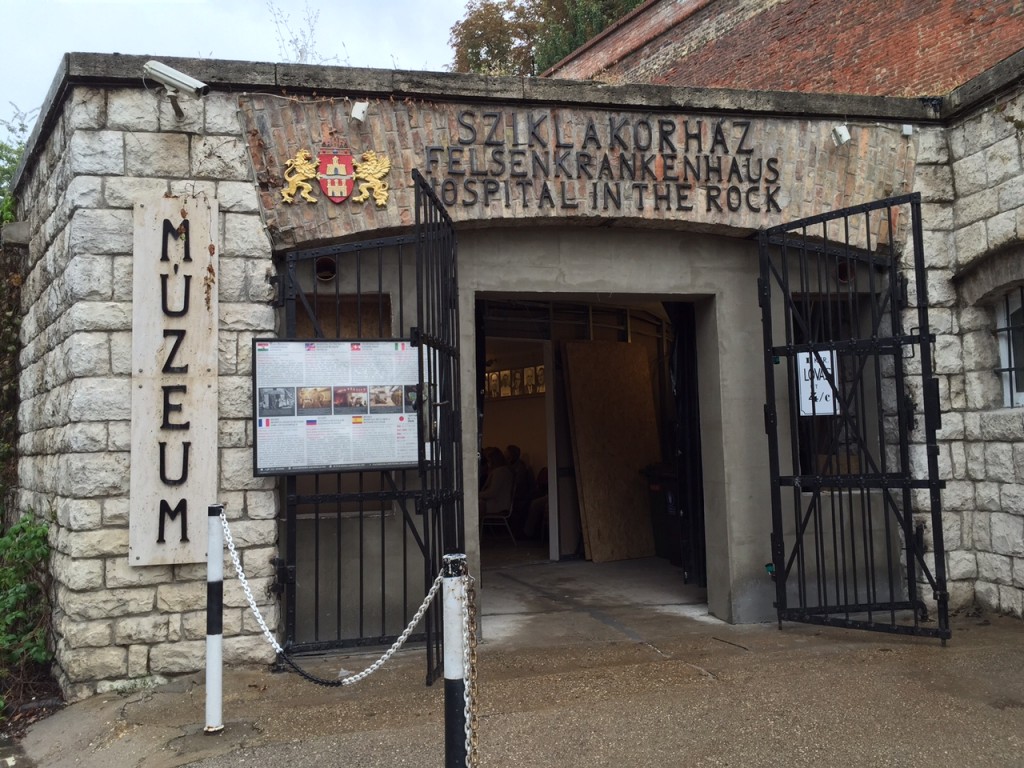Against all odds and in spite of personal risk – doctors and nurses provide health care, especially emergency responders. We’ve all seen the stories and images from recent disasters and war zones.
The Hospital in the Rock Museum in Budapest, Hungary is one of the most vivid examples of providing care under adverse conditions.  On a recent trip to Europe, I toured the museum; it’s an actual underground hospital built in a cave system inside Budapest’s Castle Hill.
On a recent trip to Europe, I toured the museum; it’s an actual underground hospital built in a cave system inside Budapest’s Castle Hill.
We walked along long and twisting corridors into a series of irregularly shaped rooms. I could see that the rooms were, in fact, caves; the walls were painted rock. The ceilings curved domes. Now, the passageways and rooms are brightly lit, but I could imagine them lit more dimly in the past. The walls and ceilings were lined with pipes for water, air and electricity. Our guides told us that they turn off the ventilation systems during the tours because it would be too noisy for anyone to hear the narrations.
The Hungarians built the underground hospital in the 1930’s for about 60-70 patients. During WWII, and especially in the 1944-45 Siege of Budapest, it cared for 600 wounded soldiers. During the Cold War, it was converted to be a shelter in case of a nuclear war.
During WWII, the focus was on broken limbs and wound care and of course preventing infection. We saw small, narrow wards with bunk beds pushed next to each other; three patients could be fit into two beds if needed. We saw an operating theater that accommodated two patients. Talk about major infection prevention challenges!
There was very little paper record keeping to be seen in the museum. Its mission appeared to be getting injured patients in and trying to save them. The only technology we saw was a telecommunications setup circa 1940’s to communicate with the outside world. We also saw the minimal anesthesia and X-ray equipment from that period.
The one hour tour through the caves and tunnels of the former hospital, now a museum, reminded me that this is a caring profession that serves everyone even under the most adverse conditions.
The Jewish Hospital in Budapest was taken over by the Nazi’s and everyone, including patients, doctors, nurses and staff were killed. Another more horrific story we learned as we toured the Jewish Museum the next day.
During our week in Europe, we were in parts of Germany, Austria and Hungary. We toured palaces, lavish government buildings, and magnificent churches. But the devastation and horror of WWII was always a backdrop in the stories of the tour guides.
My father served in WWII. He was in the Minnesota National Guard when he reported for active duty in late 1942. He was a member of an Army Anti-Aircraft Training Battalion stationed in California. After training, he was shipped to North Africa, where he served as an anti-aircraft gunner in the North African desert. During that time, he sustained a leg injury. While recuperating in the field hospital he was asked his civilian occupation. He told them he drove a truck for a department store. Like many G.I.s in the WWII field hospitals, he was reassigned to drive an Army Ambulance in North Africa, Sicily and Italy.
My father died of cancer when I was a small child. For much of my life, if you asked me what my father did, I would have said he worked for a department store as a furniture buyer. But my older siblings have helped me with a fuller history. I know now that my father was also part of an emergency responder team during WWII. He was also part of a health system that provided care against all odds and in spite of personal risk. Another part of my family history I’m proud of.

Mary sheehan on said:
Well done. We were also struck by the backdrop of the horror that occurred in Europe during the last century on our recent trips on the Seinne, the Danube and the Elbe.